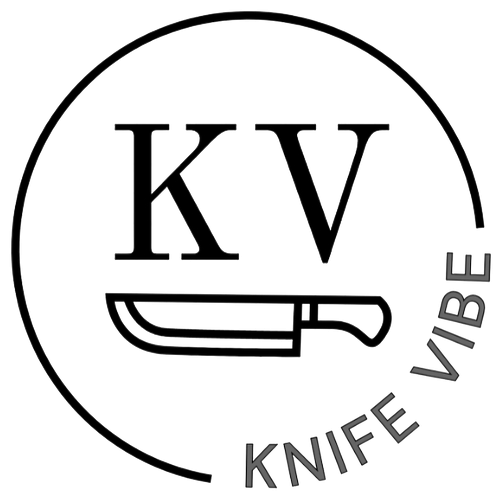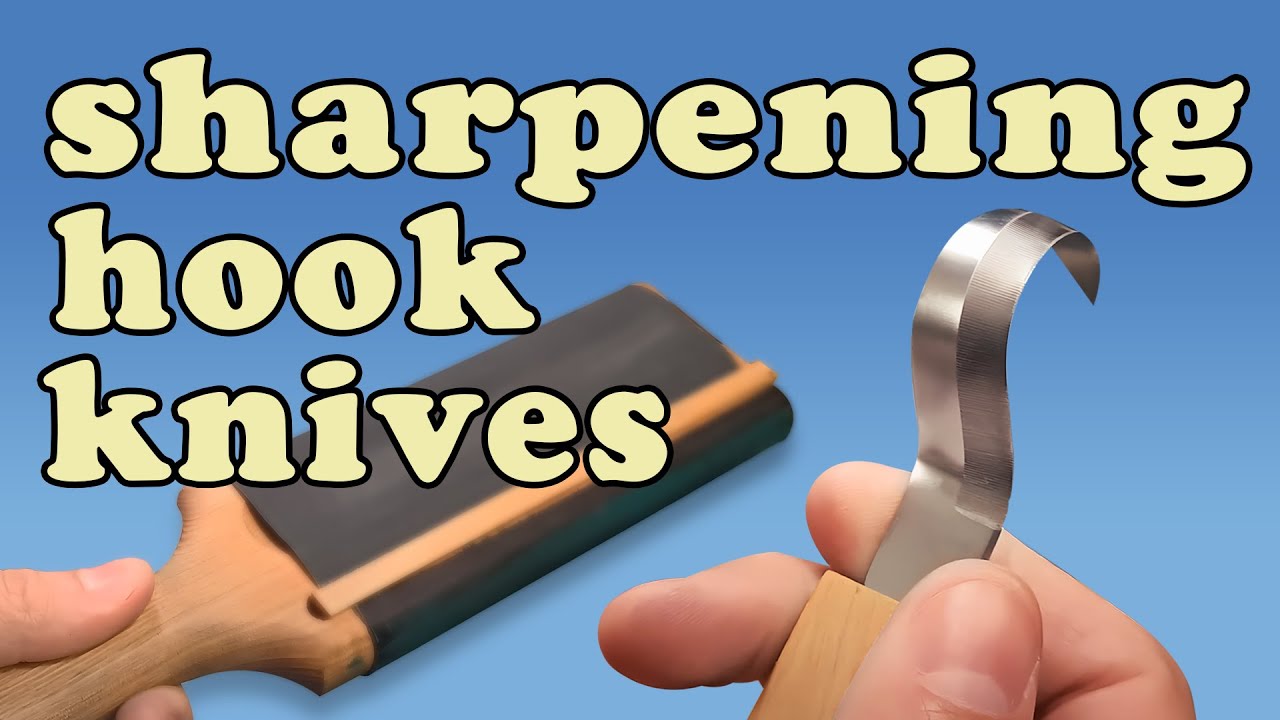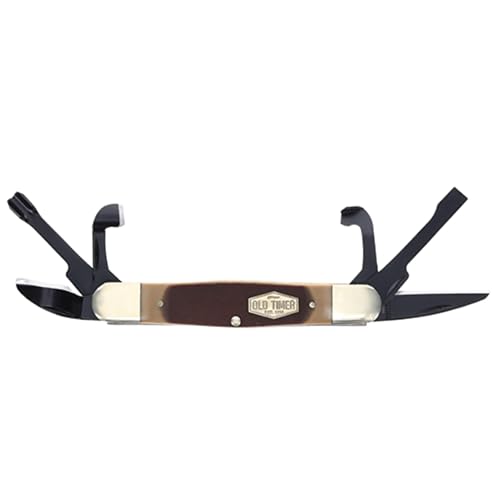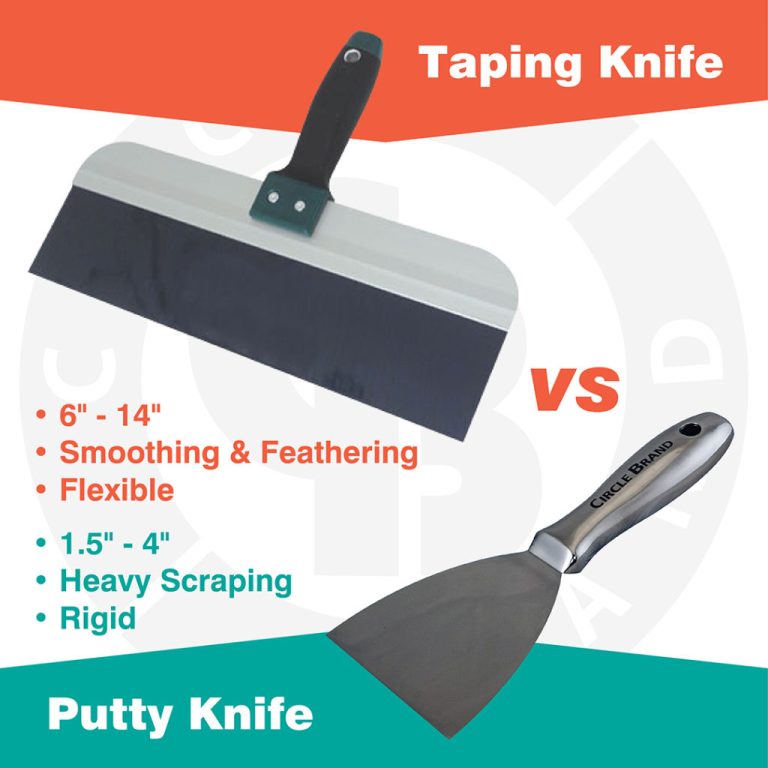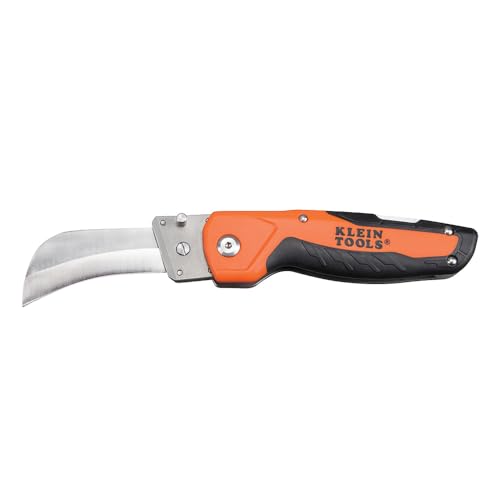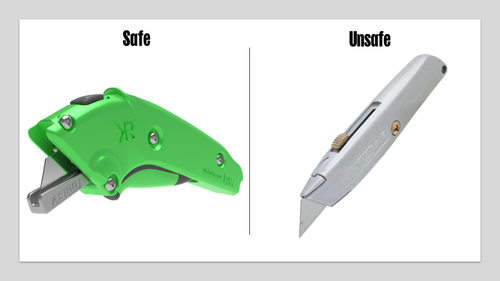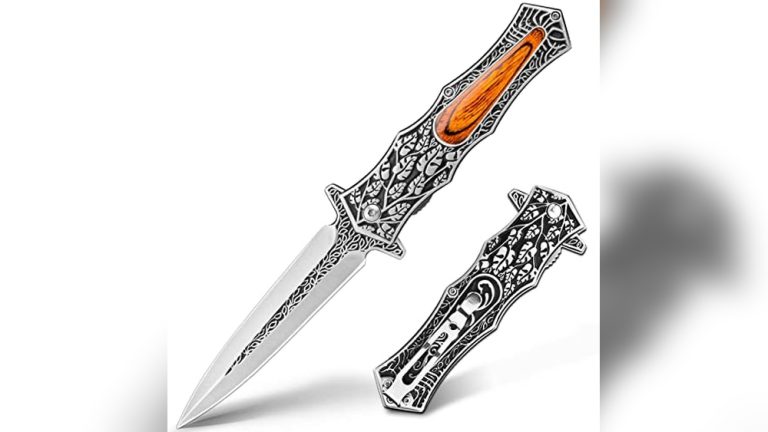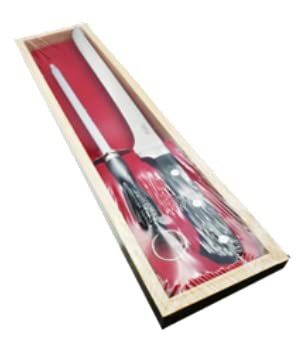How to Sharpen a Hook Knife: Expert Tips for Razor-Sharp Blades
Sharpening a hook knife can seem tricky, but it’s quite simple. A sharp hook knife is essential for carving and woodworking.
Hook knives are unique tools used for detailed wood carving. Over time, they can become dull and ineffective. Keeping them sharp ensures precision and ease in your projects. In this blog post, we will guide you through the steps to sharpen a hook knife.
From gathering the right tools to perfecting your technique, we will cover everything you need. You’ll gain the confidence to maintain your hook knife’s sharpness, making your woodworking tasks smoother and more enjoyable. Let’s dive in and learn how to keep your hook knife in top shape!

Credit: www.anneofalltrades.com
Introduction To Hook Knives
Wood carving is a beautiful art form. One of the essential tools for this craft is the hook knife. In this section, we will explore what a hook knife is and why it is important to keep it sharp.
What Is A Hook Knife?
A hook knife is a specialized carving tool. Its blade is curved, allowing for scooping cuts. These cuts are ideal for creating spoons, bowls, and other rounded objects. The unique shape makes it different from other carving knives.
Importance Of A Sharp Hook Knife
Keeping a hook knife sharp is crucial for several reasons. First, a sharp knife ensures cleaner cuts. This results in smoother surfaces on your wood pieces. Second, it reduces the effort needed for carving. A dull blade can be dangerous, as it requires more force and can slip. Third, a sharp knife helps maintain the integrity of the wood fibers, preventing unnecessary damage.
| Benefits of a Sharp Hook Knife | Description |
|---|---|
| Cleaner Cuts | Smoother surfaces on wood pieces. |
| Reduced Effort | Less force needed during carving. |
| Safety | Prevents slipping and potential injuries. |
| Wood Integrity | Maintains the wood fibers intact. |
To summarize, a sharp hook knife is a must for effective and safe wood carving. It enhances the quality of your work and ensures a smoother carving experience.
Essential Tools And Materials
Sharpening a hook knife requires specific tools and materials. Using the right equipment ensures your knife stays sharp and functional. Below are the essential tools and materials you will need.
Sharpening Stones
Sharpening stones are crucial for honing the blade. Different grits serve different purposes. Here is a breakdown:
- Coarse Stones: Use for initial sharpening.
- Medium Stones: Ideal for refining the edge.
- Fine Stones: Perfect for polishing the blade.
Choose stones based on your blade’s condition. A dull blade needs a coarse stone first. For slightly dull edges, start with medium stones. Always finish with a fine stone for the best results.
Strops And Compounds
Strops and compounds are essential for the final stage. They help achieve a razor-sharp edge. Here’s what you need:
- Leather Strop: Use to smooth the blade.
- Compound: Apply to the strop for extra sharpness.
Stropping removes any remaining burrs. It also polishes the blade. Use gentle, consistent strokes. Apply compound sparingly for the best effect.
| Tool | Purpose |
|---|---|
| Coarse Stone | Initial sharpening |
| Medium Stone | Refining edge |
| Fine Stone | Polishing blade |
| Leather Strop | Smoothing blade |
| Compound | Enhancing sharpness |
Safety Precautions
Sharpening a hook knife requires careful attention to safety. Always prioritize your well-being. Following proper safety measures prevents accidents and injuries.
Protective Gear
Wear protective gloves to shield your hands from cuts. Gloves with good grip also help in handling the knife securely. Use safety glasses to protect your eyes from flying particles. This is especially important when using power tools. Closed-toe shoes are a must to protect your feet from falling objects.
Proper Handling Techniques
Always hold the knife by its handle, away from the blade. Ensure your work area is clean and well-lit. This minimizes distractions and hazards. Keep your fingers clear of the blade’s path. Use a stable surface to sharpen the knife.
Sharpen the knife away from your body. This prevents accidental cuts. Take breaks to stay focused and avoid fatigue. Alertness is key to maintaining safety.
Preparing The Hook Knife
Before sharpening your hook knife, it is important to prepare it properly. This ensures a smooth sharpening process and prevents damage to the blade. Follow these steps to get your hook knife ready.
Cleaning The Blade
First, clean the blade thoroughly. Use a soft cloth and some mild soap. This removes any dirt, debris, or sap that may have accumulated. Avoid using harsh chemicals as they can damage the blade.
- Wet the cloth with warm water and apply a little soap.
- Gently wipe the blade, making sure to reach all crevices.
- Rinse the blade with clean water and dry it completely with a dry cloth.
Inspecting For Damage
Next, inspect the blade for any damage. Look for nicks, cracks, or bends. A damaged blade can lead to poor performance and may even be dangerous to use.
- Hold the blade under a bright light to see any imperfections.
- Run your finger gently along the edge to feel for any rough spots.
- If you find any damage, consider repairing or replacing the blade.
| Steps | Details |
|---|---|
| Cleaning | Use a soft cloth and mild soap to clean the blade. |
| Inspecting | Check for nicks, cracks, or bends in the blade. |
By following these steps, you ensure your hook knife is ready for sharpening. Proper preparation can make the process easier and more effective.
Sharpening The Hook Knife
Sharpening a hook knife is a precise task. It requires the right technique and tools. A sharp hook knife ensures clean cuts and a better carving experience.
Angle And Technique
The angle is crucial when sharpening a hook knife. Hold the knife at a consistent angle, usually around 15-20 degrees. This angle helps maintain the knife’s edge.
Use smooth, even strokes. Move the blade along the sharpening tool. Avoid applying too much pressure. Gentle strokes ensure a sharp and even edge. Consistency is key in this step.
Using Sharpening Stones
Sharpening stones are ideal for hook knives. Start with a coarse stone. This removes any nicks and dullness. Hold the knife at the correct angle. Move it in a circular motion on the stone.
Next, use a finer stone. This polishes the edge. It makes the knife razor-sharp. Repeat the same motion as with the coarse stone. Consistency in technique is important.
Finish with a honing stone or strop. This final step smooths the edge. It removes any burrs left by the sharpening stones. Your hook knife is now sharp and ready for use.
Honing And Stropping
Sharpening a hook knife involves two main steps: honing and stropping. Honing helps to refine the edge, making it sharp. Stropping, on the other hand, polishes the edge, ensuring it is smooth and ready for use. Both steps are crucial for maintaining a sharp, efficient hook knife. Below, we will discuss the methods and techniques for honing and stropping your hook knife.
Honing Methods
Honing a hook knife requires precision. Here are some effective methods:
- Whetstone: Use a fine-grit whetstone. Hold the knife at a consistent angle. Move it in a circular motion.
- Diamond Stone: This is a faster method. It cuts through the metal more quickly. Follow the same technique as with a whetstone.
- Ceramic Rod: Ideal for touch-ups. Use it after the whetstone or diamond stone. Gently glide the knife along the rod.
Stropping Techniques
Stropping is the final step in sharpening. It removes any burrs and polishes the edge.
Here are some common stropping techniques:
- Leather Strop: Apply stropping compound to the leather. Pull the knife away from the edge. Repeat on both sides.
- Wooden Strop: Use a wooden strop with a leather surface. This gives a firmer base. Follow the same technique as with a leather strop.
- Compound-Free Strop: For a final polish. Use a clean leather strop. This removes any remaining compound.
Remember to keep your movements smooth and controlled. Consistency is key to a well-sharpened hook knife.
Testing Sharpness
Testing the sharpness of your hook knife is crucial. A sharp knife ensures precision and safety. In this section, we’ll explore two methods to test sharpness. Both are simple and effective.
Visual Inspection
Start with a visual inspection. Look closely at the edge of the knife. Use a bright light to help you see better. A sharp edge will appear smooth and even. There should be no nicks or dull spots. These flaws can affect performance and safety.
Next, examine the blade from different angles. Hold the knife at eye level. Rotate it slowly under the light. A sharp edge will not reflect much light. If you see shiny spots, the blade needs more sharpening.
Practical Tests
After the visual inspection, perform practical tests. First, try the paper test. Hold a piece of paper in one hand. Use the knife to slice through the paper. A sharp blade will cut smoothly without tearing.
Another test is the shaving test. Carefully run the blade across a piece of wood. A sharp knife will shave off thin, even curls. This shows the blade is ready for detailed work.

Credit: www.youtube.com
Maintaining Sharpness
Maintaining sharpness is essential for your hook knife. A sharp hook knife ensures clean cuts and precise carvings. Without regular care, the blade will dull quickly. This can lead to frustration and poor-quality work.
Regular Maintenance
Regular maintenance keeps your hook knife in top shape. After each use, clean the blade thoroughly. Remove any sap or residue with a soft cloth. Use a strop to hone the edge. Stropping helps maintain the knife’s sharpness. Move the blade across the strop in a consistent direction. Repeat this process a few times. It only takes a few minutes but makes a big difference.
Proper Storage
Proper storage protects your hook knife from damage. Always store it in a dry place. Moisture can cause rust and dull the blade. Use a sheath or protective cover to shield the blade. This prevents accidental nicks or chips. Keep it away from other tools. Collisions with other metal objects can dull the edge. A dedicated storage spot ensures your hook knife stays sharp and ready to use.
Troubleshooting Common Issues
Sharpening a hook knife is an essential skill for woodworkers. But, it’s common to face issues while sharpening. Here, we address some common problems and how to solve them.
Uneven Edges
Uneven edges occur when the sharpening angle is inconsistent. This can lead to poor cutting performance. To fix this, follow these steps:
- Check the sharpening guide for the correct angle.
- Use a stable surface to maintain consistency.
- Sharpen both sides equally.
Using a sharpening jig can help maintain the right angle. It ensures even pressure across the edge.
Burr Formation
A burr is a rough edge left after sharpening. Burrs can weaken the knife’s cutting ability. To remove burrs, follow these tips:
- Use a stropping technique with leather.
- Lightly drag the edge across the leather.
- Repeat until the burr is gone.
Another method is to use a fine-grit stone. Gently sharpen the edge to remove burrs. This ensures a smooth, sharp edge.
| Issue | Solution |
|---|---|
| Uneven Edges | Check angle, use stable surface, sharpen equally |
| Burr Formation | Use stropping, fine-grit stone |
By addressing these common issues, you can keep your hook knife sharp and effective. Consistent practice and proper techniques make a big difference.
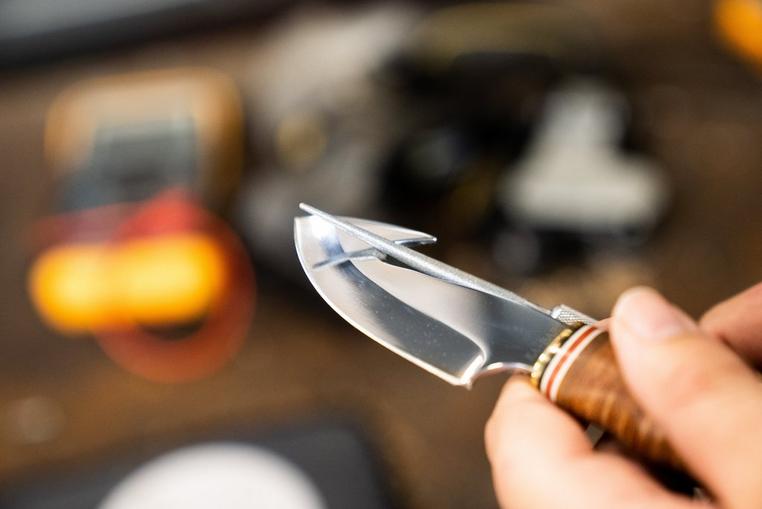
Credit: www.knivesandtools.com
Expert Tips And Tricks
Sharpening a hook knife can be tricky. With the right tips and tricks, you can make your knife sharp again. Here are some expert tips to help you along the way.
Advanced Techniques
To sharpen a hook knife, use a fine diamond file. Move the file along the inside curve of the blade. Keep the angle consistent to avoid damaging the blade. Work slowly to ensure precision.
Another technique involves using a ceramic rod. Gently slide the rod inside the hook. Maintain a steady angle and apply light pressure. This method helps achieve a smooth, sharp edge.
Stropping is another advanced technique. Use a leather strop with polishing compound. Draw the blade away from the edge, maintaining a consistent angle. This method polishes the blade and removes any burrs.
Recommended Products
Certain products can make sharpening easier. A fine diamond file is a great option. It provides precise control and effective sharpening. Look for brands like DMT or Trend.
Ceramic rods are also useful. They are gentle on blades and provide a smooth finish. Brands like Spyderco offer high-quality options.
Leather strops are essential for a polished finish. Choose strops from reputable brands like BeaverCraft. They often come with polishing compounds for added efficiency.
Frequently Asked Questions
How To Sharpen A Hook Knife?
To sharpen a hook knife, use a fine-grit sharpening stone. Maintain the original bevel angle. Stroke gently and evenly. Finish with a strop.
What Tools Are Needed To Sharpen A Hook Knife?
You will need a fine-grit sharpening stone, a strop, and honing compound. These tools ensure a sharp and polished edge.
How Often Should You Sharpen A Hook Knife?
Sharpen your hook knife regularly, depending on use. For frequent use, sharpen it every few weeks. This keeps it effective and safe.
Can You Sharpen A Hook Knife At Home?
Yes, you can sharpen a hook knife at home. Use a fine-grit sharpening stone and strop. Follow proper techniques for best results.
Conclusion
Sharpening a hook knife is simple with the right steps. Always ensure your knife is clean before starting. Use a sharpening stone for best results. Maintain the correct angle while sharpening. Regular sharpening keeps your knife effective. Remember to wear safety gear.
Practice makes perfect. Consistent care extends your knife’s life. Happy woodworking!
